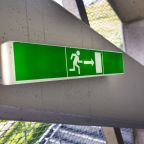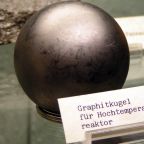Search results
F. Rowold, O. Bartos, K. Hummelsheim
Gesellschaft für Anlagen- und Reaktorsicherheit (GRS) gGmbH

The Radiation Protection Act stipulates that the federal government must draw up plans to protect the population in the event of radiological emergencies. While a general, overarching emergency response plan fulfils the fundamental requirements, specific emergency response plans set out provisions for specific areas of life. GRS experts are currently supporting the Federal Environment Ministry in drawing up these specific plans.
The Supervisory Board of Gesellschaft für Anlagen- und Reaktorsicherheit (GRS) gGmbH has appointed Dr Florence-Nathalie Sentuc as the new Technical and Scientific Director of GRS with effect from 15 August 2024. She succeeds Uwe Stoll, who held this position at GRS for the past eight years.

With the shutdown of the last German nuclear power plants, the decommissioning of these installations is now at the centre of attention. However, the impending shortage of skilled labour poses major challenges for the industry. Experts from GRS are therefore working with their partners in a research project that has just been launched to train specialists more efficiently in the future and to promote young talent in a more targeted manner: A hybrid learning platform with VR and AR elements and an innovative AI application are intended to optimise dismantling processes and prepare the industry for the future. In addition, a digital platform is being developed to make licensing processes more transparent and efficient.
C. Müller, J. Herb, P. Gebhardt, J. Shvab

The Chinese Shidaowan nuclear power plant recently made the headlines in Germany: According to a paper published in the scientific journal Joule, tests are said to have proven that a core meltdown accident in the world's first commercially operated pebble bed reactor has been ruled out and that it is therefore ‘inherently safe’. This article describes how this type of reactor works, what follows from the experiment, and what safety challenges may nevertheless arise.
F. Rowold, O. Bartos, K. Hummelsheim